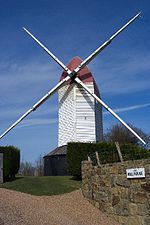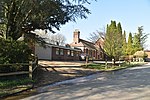Mayfield College

Mayfield College is a defunct Roman Catholic boys' boarding school founded as the Holy Trinity Orphanage For Boys in 1865–1866 by the American-born Dowager Duchess of Leeds, Louisa Catherine Caton, one mile from Mayfield, East Sussex. The main building and attached chapel were built in the Gothic style, primarily of red brick and are Grade II listed, having been designed by E. W. Pugin. After closure in 1999 both the main building and chapel were converted into luxury apartments now called collectively Mayfield Grange. Officially opening in 1868 it was also known as the Xaverian Brothers School, St Xavier's College and Xaverian College at various times. Mayfield College was built as one of a pair of orphanages at the Duchess's expense, the other originally known as St. Michael's Orphanage for Girls in Bletchingley (Mark Cross), East Sussex, also designed by Pugin.From 1936 to 1959 Mayfield College had an associated preparatory boarding school known as the School of St. Edward the Confessor at Foxhunt Manor in Waldron, East Sussex where the religious order of Xaverian Brothers also taught boys from 8–12 years of age. On closing the prep school became a convent known as Monastery of the Visitation.
Excerpt from the Wikipedia article Mayfield College (License: CC BY-SA 3.0, Authors, Images).Mayfield College
Little Trodgers Lane, Wealden Mayfield and Five Ashes
Geographical coordinates (GPS) Address Nearby Places Show on map
Geographical coordinates (GPS)
| Latitude | Longitude |
|---|---|
| N 51.041126 ° | E 0.268266 ° |
Address
Little Trodgers Lane
Little Trodgers Lane
TN6 3NT Wealden, Mayfield and Five Ashes
England, United Kingdom
Open on Google Maps








